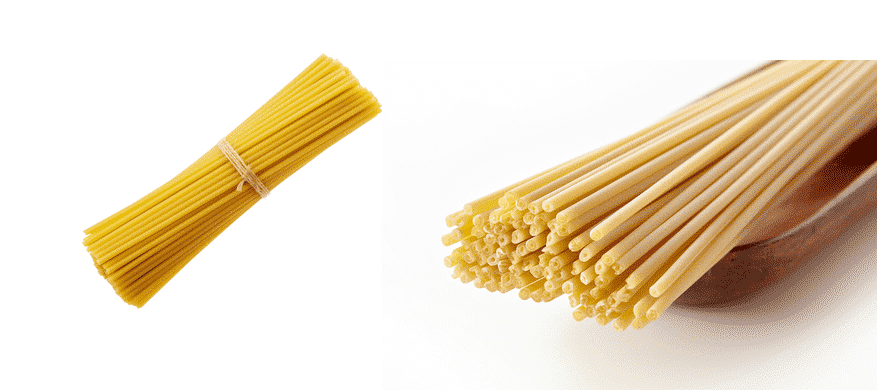
It doesn’t matter if you are Italian or not, we are pretty sure that you are a fan of pasta. For the most part, we only know about spaghetti, macaroni, and fettuccine but there are many other types of pasta out there. For this reason, we are talking about perciatelli vs. bucatini. So, are you ready to know about these two types of pasta?
Perciatelli vs Bucatini
Bucatini
To begin with, this is a pasta variant (obviously) and is known for the thick spaghetti-like appearance. Bucatini has a hole running in the center which differentiates it from spaghetti. This pasta is extremely common in Roma and throughout the Lazio regions. It is often confused with ziti which has a long and hollow structure with square-shaped edges but bucatini is different.
As far as the name is concerned, it takes its name from the Italian word “buco” which means holes. It wouldn’t be wrong to say that this is the tubed pasta which is made from a mixture of water and durum wheat flour (hard flour, to be precise). Generally, bucatini’s length ranges from 25cm to 30cm. As far as the diameter is concerned, it has a 3mm diameter.
When it comes down to cooking, the cooking time for bucatini is around nine minutes but you can boil it for up to twelve minutes if you prefer softer pasta. As for consumption, it can be used in a variety of Italian recipes. For instance, it can be served with pancetta, vegetables, buttery sauces, anchovies, sardines, eggs, and guanciale.
Personally, we love eating bucatini with amatriciana sauce. If we look at the traditional recipes, this long and spaghetti-like pasta is made with guanciale (it is the meat that’s cut out from jowl of pork). The most interesting fact that is the raw bucatini serves as a drinking straw and it will be biodegradable, how cool! When the preparation is concerned, it’s made by cutting the flat pasta sheets into ribbon style.
To illustrate, you have to add the pasta dough to the machine and the perforations will release the bucatini. The perforations have a tiny and circular design which results in long tubes. When the tubes are ready, they can be dried or cooked, whatever seems fine to you. That being said, you can make bucatini at home if you have the pasta extruder and stand mixer. Last but not least, this pasta has a rough surface which promises better absorption of sauces and is perfect for vegan people.
Perciatelli
To begin with, this is a new type of pasta that looks more like a straw. Before we move on to the details, let us tell you that it goes perfectly with parmesan cheese, peas, and butter. This pasta looks exactly like spaghetti but it has a fatter design and has a tiny hole in the middle. It can be served hearty meat sauces, such as Bolognese sauces.
This is mainly because perciatelli has a thick texture which makes it perfect for Italian soups, such as minestrone. In case you are wondering about cooking, it has to be boiled for making it soft and edible. The most interesting fact that is that perciatelli can be hard to find because it’s not easily available in every grocery store or supermarket.
That being said, if you want to eat perciatelli, you will need to check the Italian grocers to specialty markets. In addition, it can be easily found online. On the other hand, if you cannot perciatelli at all, we suggest that you opt for fettuccine or linguini because they are readily available (the appearance is somewhat similar but you won’t find any hole).
This is the tubular pasta that looks pretty similar to vermicelli noodles. When it comes down to the texture, perciatelli has a springy and chew texture with the just-right slipperiness. That being said, it can be enjoyed in gravies and sauces. Traditionally, it is served with tomato sauces and you can even enjoy it with fennel sauce.
Moreover, you can serve perciatelli with casseroles, hearty recipes, and meat recipes. Some people also break down this pasta into smaller sizes and add them to soups. As far as the cooking time is concerned, it takes around ten minutes to become edible.